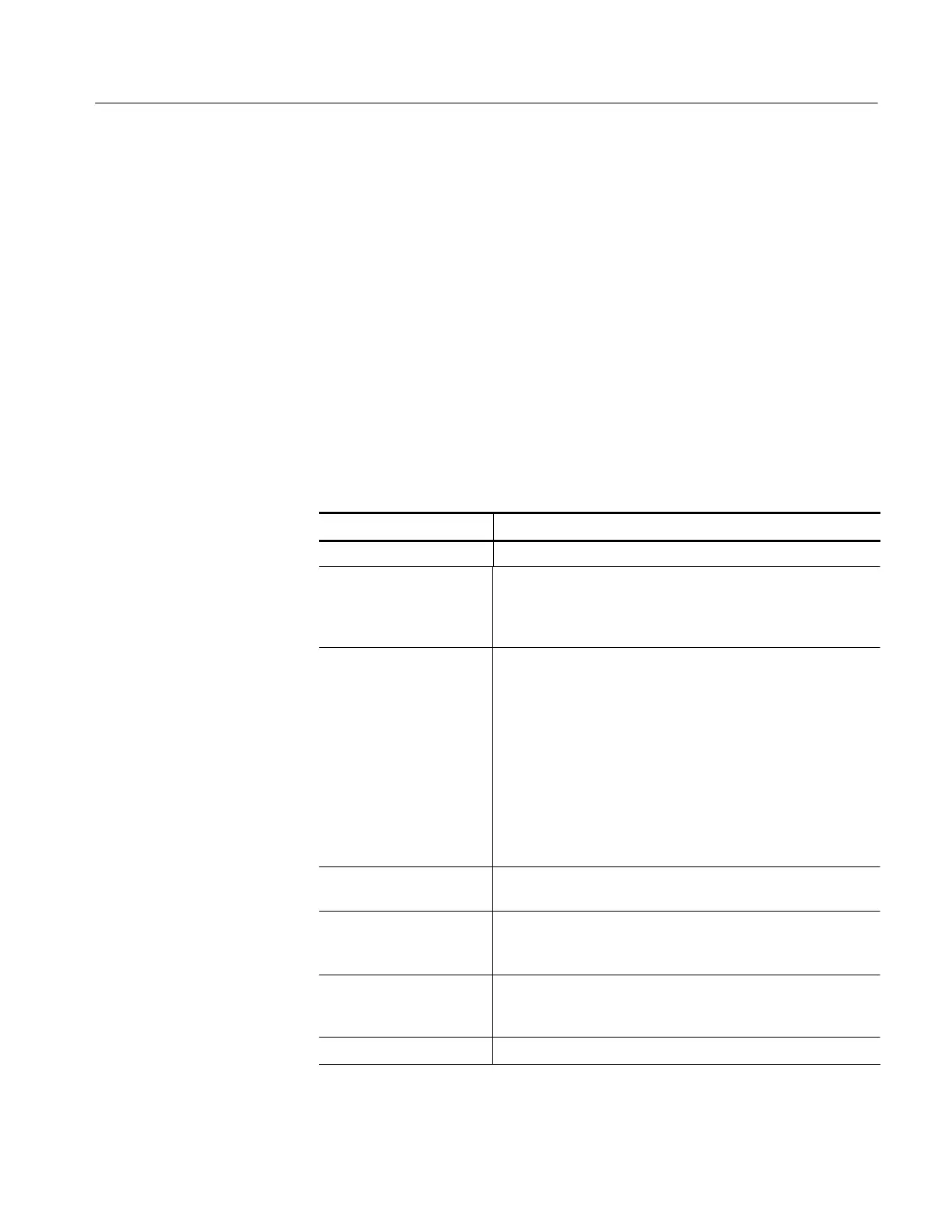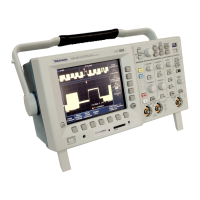Command Descriptions
TDS3000, TDS3000B, and TDS3000C Series Programmer Manual
2- 199
window is an optional argument that sets the FFT window algorithm to apply to
the source signal. Valid choices are RECTangular, HAMming, HANning,and
BLAckmanharris. Each window is a trade-off between frequency resolution and
magnitude accuracy. What you want to measure, and your source signal
characteristics, help determine which window to use.
scaling is an optional argument that sets the FFT waveform vertical scale type.
Valid choices are: LOGrms and LINearrms.
For Advanced Math, <QString> contains the expression
”<expression>”.
expression is a syntactically-correct sequence of valid waveform sources,
measurements, mathematical operators, and numeric constants.
Table 2- 37: Advanced Math expression elements
Expression Description
CH1-CH4, REF1-REF4 Specifies a waveform data source.
FFT( , INTG( , DIFF( Executes a Fast Fourier Transform, integration, or differentiation
operation on the expression that follows. The FFT operator must
be the first (left-most) operator in an expression. All these
operations must end with a right parenthesis.
AMPlitude( , AREa( ,
BURst( , CARea(
CMEan( , CRMs( ,
DELay( , FALL( ,
FREQuency( , HIGH( ,
LOW( , MAXimum( ,
MEAN( , MINImum( ,
NDUty( , NOVershoot( ,
NWIdth( , PDUTy( ,
PERIod( , PHAse(
PK2pk( , POVershoot ( ,
PWIdth( , RISe( , RMS(
Executes the selected measurement operati on on the waveform
(active or reference) that follows. All these operations must end
with a right parenthesis.
VAR1, VAR2 Adds the user-defined variable to the expression. Refer to the
MATH:VAR<x> command.
+,--,*,/ Executes an addition, subtraction, multiplicat ion, or division
operation on the following expression. + and -- are also unary;
use -- to negate the expression t hat follows.
(), Parentheses provide a way to control evaluation order in an
expression. The comma is used to separate the “from” and “to”
waveforms in Delay and Phase measurement operations.
1-0,.,E Specifies a numeric value in (optional) scientific notation.
Advanced Math
Arguments

